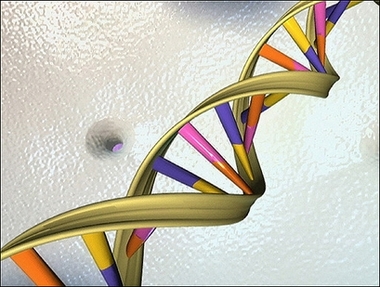We're only human? It's more complex than that
Wed Nov 22, 1:07 PM ET
PARIS (AFP)
New investigations into the code for life suggest the assumption that humans are genetically almost identical is wide of the mark, and the implications could be resounding.
Current thinking, inspired by the results five years ago from the Human Genome Project, is that the six billion humans alive today are 99.9 percent similar when it comes to genetic content and identity.
But major research work, published on Thursday, suggests we are genetically more diverse -- and the repercussions could be far-reaching for medical diagnosis, new drugs and the tale of human evolution itself.
Until now, analysis of the genome has focussed overwhelmingly on comparing flaws, or polymorphisms, in single "letters" in the chemical code for making and sustaining human life.
An international consortium of scientists has taken a different tack and believe they have uncovered a complex, higher-order variation in the code.
This better explains why some individuals are vulnerable to certain diseases and respond well to specific drugs, while counterparts swiftly fall sick or never respond to treatment, the authors believe.
Their focus has been to dig out deletions or duplications of code among relatively long sequences of individual DNA and then compare these so-called copy number variations (CNVs) across a range of volunteers of different ancestry.
The researchers were astonished to locate 1,447 CNVs in nearly 2,900 genes, or around one eighth of the human genetic code.
"Each one of us has a unique pattern of gains and losses of complete sections of DNA," said Matthew Hurles of Britain's Wellcome Trust Sanger Institute, one of the project's partners.
"One of the real surprises of these results was just how much of our DNA varies in copy number. We estimate this to be at least 12 percent of the genome."
"The copy number variation that researchers had seen before was simply the tip of the iceberg, while the bulk lay submerged, undetected. We now appreciate the immense contribution of this phenomenon to genetic differences between individuals."
Some of the missing or duplicated stretches are very long, suggesting that, like backroom switches in a protein factory, CNVs must have a big impact on gene expression.
Nearly 16 percent of genes that are known to be related to disease have CNVs, the group found.
These include genes involved in rare genetic disorders such as DiGeorge, Williams-Beuren and Prader-Willi syndromes and those linked with schizophrenia, cataracts, spinal muscular atrophy and atherosclerosis.
But kidney disease, Parkinson's, Alzheimer's and vulnerability to malaria and the human immunodeficiency virus (HIV), which recent research has blamed on single-letter variations in the gene code, may also well be rooted in CNVs, the doctors believe.
"The stage is set for global studies to explore anew... the clinical significance of human variation," said Huntington Willard and Kevin Shianna of the Institute for Genome and Science Policy at Duke University in North Carolina, in a review of the research.
Evolution is another area that will come under new scrutiny.
The "Out of Africa" scenario, by which Homo sapiens emerged from east Africa and spread around the globe, will not be challenged, though.
Our origins are so recent that the vast majority of CNVs, around 89 percent, was found to be shared among the 269 people who volunteered blood as samples for the study.
These individuals included Japanese from Tokyo, Han Chinese from Beijing, Yoruba from Nigeria and Americans of Northern and Western European ancestry.
All the same, there are widespread differences in CNVs according to the three geographical origins of the samples.
This implies that, over the last 200,000 years or so, subtle variants have arisen in the genome to allow different populations of humans adapt to their different environments, Wellcome Trust Sanger said in a press release.
The research, which appears in the British journal Nature, is based on two technical breakthroughs, one in faster, accurate sequencing of DNA and the other in a powerful software programme to spot the CNVs.

(Brexians lair)









Δεν υπάρχουν σχόλια:
Δημοσίευση σχολίου